In the diverse and dynamic world of design, various professionals specialize in crafting unique and specialized creations across different industries. In the domain of fashion design there are various specializations, each design discipline requires a distinct set of skills, expertise, and creative vision. In this series titled ” Different Types of Designers ” we delve into the multifaceted realm of fashion design to explore the roles, functions, and contributions of various designers. Part 1 of this series will focus on highlighting the roles of various types of apparel designers in fashion, shedding light on the intricacies of their work and the impact they have on shaping our world.
There is a very common misconception when we discuss career options in fashion that being an apparel designer is the only one path. I have busted this myth in my posts about all the other careers paths available, ‘31 best career opportunities in the fashion industry – part I’. Delving deep into what exactly is a designer and exactly how many types of designers are there in this industry, in this post I will inform you in detail of the wide variety of apparel designer profile that make up this global industry. With this knowledge it will be easier for you to make further decision about which designer profile suits you.
What is design and who is an apparel designer ?
Design is a vast concept. But to simplify, I always understand it as a ‘Creative Solution’ to any problem. And so, when we talk about fashion design, the problem is what to wear? When to wear? How to wear? And who is wearing? Any person or persons involved in providing solutions all these questions will come under the umbrella of ‘ apparel designer ’.
Notice how these questions do not contain the word fashion that is because I have mentioned in my earlier posts that fashion encompasses more than clothes. Thus, all the things that makeup the various components of fashion will have their unique designers. Now let us look at the various apparel designers that are there and discuss them in detail.
Women’s Wear Designer

A women’s wear designer operates at the intersection of creativity, trend analysis, and technical skill. Their role involves conceptualizing, designing, and overseeing the production of clothing specifically tailored to women. This profession demands a keen eye for detail, an understanding of fabric properties, and an ability to forecast and interpret fashion trends.
The life of a women’s wear designer is characterized by a dynamic blend of inspiration-seeking and meticulous execution. Their process often begins with extensive research into upcoming trends, historical fashion movements, and cultural influences. Drawing from this pool of inspiration, they sketch designs, experiment with fabrics, and create prototypes.
Collaboration is a significant aspect of a women’s wear designer’s life. They work closely with patternmakers, seamstresses, and manufacturers to bring their visions to life. Communication skills are crucial as they liaise with suppliers, negotiate contracts, and present their designs to clients or stakeholders.
Adaptability is essential in the fast-paced world of fashion. Women’s wear designers must stay updated on emerging technologies, sustainability practices, and consumer preferences. They navigate the challenges of balancing creativity with commercial viability, ensuring their designs resonate with their target audience while pushing the boundaries of innovation.
Despite the demands and pressures, the life of a women’s wear designer is deeply rewarding. Witnessing their creations on the runway or adorning individuals instills a sense of accomplishment and fuels their passion for pushing the boundaries of fashion. Each garment crafted is a testament to their creativity, skill, and dedication to the art of design.
Men’s Wear Designer

A men’s wear designer is a creative professional tasked with conceptualizing, designing, and producing clothing tailored specifically for men. Their work encompasses a blend of artistic expression, technical skill, and market awareness. The life of a men’s wear designer is characterized by a dedication to understanding the nuances of men’s fashion, from classic tailoring to contemporary trends.
Functionally, a men’s wear designer begins their process by researching current fashion trends, cultural influences, and historical references. They draw inspiration from a variety of sources, ranging from street style to high fashion, to create designs that resonate with their target demographic. Sketching, prototyping, and refining designs are integral components of their workflow.
Collaboration plays a significant role in a men’s wear designer’s life. They work closely with patternmakers, textile experts, and manufacturers to bring their designs to fruition. Effective communication skills are essential as they negotiate contracts, manage production timelines, and liaise with clients or retailers.
Adaptability is crucial in the ever-evolving landscape of men’s fashion. Designers must stay abreast of emerging trends, technological advancements, and shifting consumer preferences. Balancing creativity with commercial viability is a constant challenge, requiring designers to innovate while maintaining an understanding of market demands.
Despite the pressures, the life of a men’s wear designer is fulfilling. Seeing their designs worn by individuals and making an impact on the fashion landscape brings a sense of accomplishment and fuels their passion for the craft. Each garment created is a testament to their skill, creativity, and dedication to the art of men’s fashion.
Children’s Wear Designer
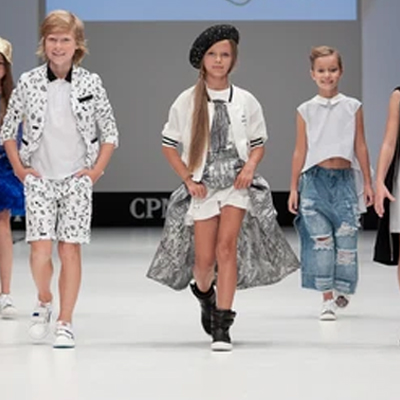
A children’s wear designer is a professional responsible for creating clothing specifically tailored to infants, toddlers, and older children. Their work involves a unique blend of creativity, practicality, and understanding of child development. The life of a children’s wear designer is marked by a commitment to designing clothing that is not only fashionable but also functional and comfortable for young wearers.
Functionally, a children’s wear designer begins by researching trends in children’s fashion, taking into account factors such as colors, prints, and fabric textures that appeal to both children and parents. They must consider the needs of children, including ease of movement, safety, and durability, while incorporating elements of whimsy and playfulness into their designs.
Collaboration is key in a children’s wear designer’s life. They work closely with patternmakers, garment technologists, and manufacturers to ensure that their designs are translated into high-quality, child-friendly clothing. Communication skills are essential as they liaise with suppliers, negotiate contracts, and present their designs to clients or retailers.
Adaptability is crucial in the world of children’s fashion, as trends and preferences can change rapidly. Designers must stay updated on emerging technologies, sustainable practices, and evolving consumer demands to remain competitive in the market.
Despite the challenges, the life of a children’s wear designer is rewarding. Seeing their designs worn by young children, bringing joy and comfort to families, is a source of immense satisfaction. Each garment created is a testament to their creativity, skill, and dedication to designing clothing that celebrates the spirit and imagination of childhood.
The Knitwear Designer
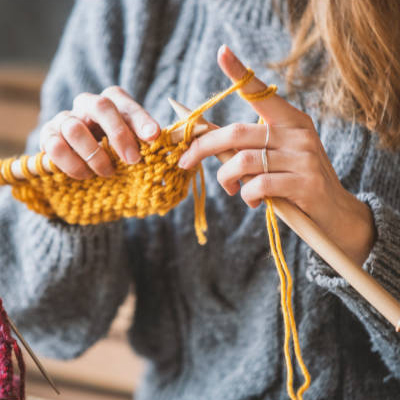
A knitwear designer specializes in creating garments and accessories made from knitted fabrics, such as sweaters, scarves, hats, and gloves. Their work involves a unique blend of artistic flair, technical expertise, and an understanding of textile properties. The life of a knitwear designer is marked by a deep appreciation for the intricate craft of knitting and a passion for creating cozy and stylish pieces.
Functionally, a knitwear designer begins their process by conceptualizing designs and selecting suitable yarns based on factors like texture, color, and weight. They often experiment with different knitting techniques, such as cables, lace, and intarsia, to achieve desired patterns and textures. Sketching and prototyping are essential steps in translating their vision into tangible garments.
Collaboration is central to a knitwear designer’s life. They work closely with yarn suppliers, sample makers, and manufacturers to bring their designs to life. Effective communication skills are crucial as they convey their design ideas, provide feedback, and ensure quality control throughout the production process.
Adaptability is key in the ever-evolving landscape of knitwear fashion. Designers must stay updated on trends in knitting techniques, yarn innovations, and sustainable practices to remain competitive in the market.
Despite the challenges, the life of a knitwear designer is deeply rewarding. Seeing their creations worn and appreciated for their craftsmanship and style brings a sense of fulfillment. Each knitted piece is a labor of love, showcasing the designer’s skill, creativity, and dedication to the art of knitwear design.
The Lingerie Designer
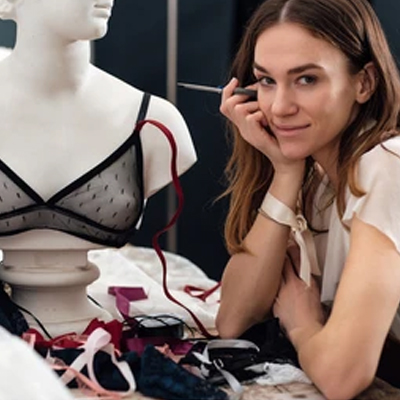
A lingerie designer specializes in creating intimate apparel, including bras, panties, corsets, and nightwear, catering to both comfort and aesthetics. Their work requires a delicate balance between functionality, sensuality, and innovation. The life of a lingerie designer is characterized by a profound understanding of the female form, a keen eye for detail, and a commitment to celebrating femininity.
Functionally, a lingerie designer begins their process by researching trends in lingerie fashion, exploring new fabrics, trims, and embellishments that enhance both comfort and style. They sketch designs, experiment with different silhouettes, and develop prototypes to ensure proper fit and support. Attention to detail is paramount, as lingerie often involves intricate construction techniques and fine craftsmanship.
Collaboration plays a significant role in a lingerie designer’s life. They work closely with patternmakers, seamstresses, and lingerie technicians to bring their designs to fruition. Effective communication is essential as they liaise with fabric suppliers, manufacturers, and retailers to ensure the quality and consistency of their products.
Adaptability is crucial in the ever-evolving lingerie industry. Designers must stay updated on emerging trends, body positivity movements, and sustainability practices to meet the diverse needs and preferences of modern consumers.
Despite the challenges, the life of a lingerie designer is rewarding. Seeing their designs empower and uplift women, enhancing their confidence and self-expression, brings a deep sense of satisfaction. Each piece created is a testament to the designer’s creativity, skill, and dedication to celebrating the beauty of the female form through lingerie design.
The Sportswear Designer

A sportswear designer specializes in creating apparel and accessories tailored for athletic activities, blending functionality, style, and performance. Their work involves a deep understanding of movement, fabric technology, and market trends. The life of a sportswear designer is marked by a passion for sports and an unwavering commitment to pushing the boundaries of design and innovation.
Functionally, a sportswear designer begins their process by researching the latest trends in sports fashion and performance technology. They collaborate with athletes, coaches, and sports scientists to understand the specific needs and demands of various sports and activities. Sketching, prototyping, and testing are integral parts of their workflow, ensuring that their designs meet both aesthetic and functional requirements.
Collaboration is essential in a sportswear designer’s life. They work closely with textile engineers, garment technologists, and manufacturers to develop fabrics and constructions that enhance performance, comfort, and durability. Effective communication skills are vital as they liaise with suppliers, negotiate contracts, and present their designs to clients or retailers.
Adaptability is key in the dynamic world of sportswear fashion. Designers must stay updated on advancements in fabric technology, sustainability practices, and emerging sports trends to remain competitive in the market.
Despite the challenges, the life of a sportswear designer is immensely gratifying. Seeing their designs worn by athletes, helping them perform at their best, brings a profound sense of accomplishment. Each garment created is a testament to the designer’s creativity, innovation, and dedication to enhancing the intersection of sports and fashion.
The Costume Designer

A costume designer is a creative professional responsible for conceptualizing, designing, and creating costumes for various forms of entertainment, including film, television, theater, and live events. Their work involves a blend of artistic vision, historical research, and practical skill. The life of a costume designer is marked by creativity, collaboration, and the ability to bring characters to life through clothing.
Functionally, a costume designer begins their process by thoroughly analyzing the script or concept, researching historical periods, cultural references, and character backgrounds to inform their designs. They collaborate closely with directors, producers, and other members of the creative team to ensure that costumes align with the overall vision of the production. Sketching, fabric selection, and costume fittings are essential steps in bringing their designs from concept to reality.
Collaboration is central to a costume designer’s life. They work closely with costume makers, tailors, and artisans to construct costumes that not only look visually striking but also meet the practical demands of filming or performing. Effective communication skills are essential as they coordinate with wardrobe departments, manage budgets, and oversee costume fittings and alterations.
Adaptability is crucial in the ever-changing world of entertainment. Costume designers must stay updated on industry trends, advancements in costume technology, and evolving production requirements to meet the demands of each project.
Despite the challenges, the life of a costume designer is immensely fulfilling. Seeing their designs come to life on stage or screen, enriching the storytelling and enhancing the audience’s experience, brings a profound sense of achievement. Each costume created is a testament to the designer’s creativity, skill, and dedication to the art of costume design.
The Ready-To-Wear Designer
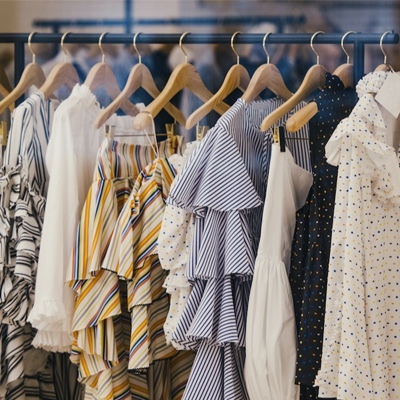
A ready-to-wear (RTW) designer specializes in creating clothing lines that are manufactured and sold in standard sizes, ready for immediate purchase and wear. Their work involves a blend of creativity, market analysis, and practicality. The life of a ready-to-wear designer is marked by a fast-paced environment, where trends shift rapidly, and consumer demands evolve constantly.
Functionally, a ready-to-wear designer begins their process by researching current fashion trends, analyzing consumer preferences, and identifying gaps in the market. They conceptualize designs that balance style with wearability, considering factors such as fabric choice, silhouette, and price point. Sketching, patternmaking, and sample creation are integral components of their workflow.
Collaboration plays a significant role in a ready-to-wear designer’s life. They work closely with patternmakers, garment technicians, and manufacturers to ensure that their designs are translated into high-quality, production-ready garments. Effective communication skills are essential as they negotiate contracts, manage production timelines, and liaise with retailers or distributors.
Adaptability is key in the fast-paced world of ready-to-wear fashion. Designers must stay updated on emerging trends, technological advancements, and consumer behavior to remain competitive in the market.
Despite the challenges, the life of a ready-to-wear designer is rewarding. Seeing their designs worn by individuals worldwide, making an impact on the fashion landscape, brings a sense of accomplishment and fuels their passion for creating accessible and stylish clothing for diverse audiences. Each garment created is a testament to their creativity, skill, and dedication to the art of ready-to-wear design.
The Haute Couturier
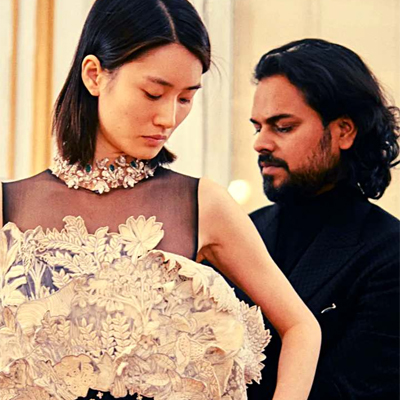
The haute couturier is an elite fashion designer who specializes in creating custom-made, high-end garments for individual clients. Their work is characterized by exquisite craftsmanship, luxurious fabrics, and meticulous attention to detail. The life of a haute couturier is marked by a dedication to preserving the tradition of couture, pushing the boundaries of design, and catering to the most discerning clientele.
Functionally, a haute couturier begins their process by collaborating closely with clients to understand their unique preferences, style, and body measurements. They create custom sketches and select the finest fabrics, often sourced from exclusive suppliers worldwide. Each garment is meticulously crafted by hand, with multiple fittings and adjustments to ensure a perfect fit and finish.
Collaboration is paramount in the life of a haute couturier. They work closely with skilled artisans, including patternmakers, seamstresses, embroiderers, and beaders, to bring their designs to life. These collaborations often span months, if not years, resulting in one-of-a-kind pieces that showcase the highest levels of craftsmanship and artistry.
Adaptability is essential for haute couturiers, as they must navigate the evolving landscape of fashion while staying true to the traditions of couture. They draw inspiration from art, culture, and history, infusing their designs with creativity and innovation while maintaining the essence of haute couture.
Despite the challenges, the life of a haute couturier is incredibly prestigious and fulfilling. Seeing their creations worn by clients at prestigious events and gracing the pages of high-fashion magazines brings a profound sense of achievement. Each couture piece is a masterpiece, reflecting the designer’s talent, vision, and dedication to the highest standards of craftsmanship and luxury.
The Technical Designer
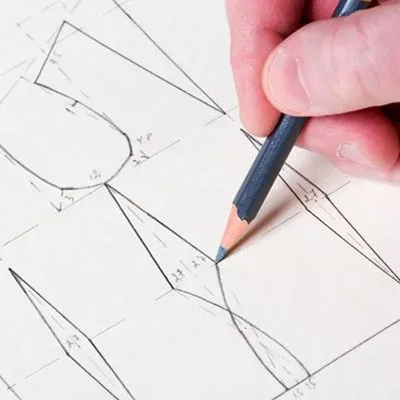
The role of a technical designer in the fashion industry is vital, bridging the gap between design and production. Technical designers focus on the practical aspects of garment construction, ensuring that designs are translated accurately into patterns and garments that fit well and meet quality standards. Their work is essential for maintaining consistency and efficiency in the manufacturing process.
Functionally, a technical designer collaborates closely with fashion designers, patternmakers, and garment technicians. They interpret design sketches and specifications, translating them into detailed technical drawings and specifications that serve as blueprints for production. These drawings include information on measurements, construction techniques, and seam allowances, among other technical details.
Life as a technical designer revolves around precision and problem-solving. They conduct fittings, analyze garment prototypes, and make necessary adjustments to ensure proper fit and functionality. Attention to detail is crucial, as technical designers must identify and resolve any potential issues related to fit, construction, or fabric performance.
Collaboration is key in the life of a technical designer. They work closely with cross-functional teams, including designers, merchandisers, and production managers, to streamline the development process and ensure that designs are executed accurately and efficiently.
Adaptability is essential for technical designers, as they must stay updated on advancements in garment construction techniques, patternmaking software, and industry standards. Despite the challenges, the life of a technical designer is rewarding, knowing that their expertise contributes to the successful realization of creative visions and the production of high-quality garments for consumers worldwide.
Do you think is this this the definitive list? Let me know if I missed any of the profiles. Also, if you want a detailed post on anyone of them, I would like to do that for you.
Conclusion
As we conclude Part 1 of our exploration into the diverse world of design, we’ve only just scratched the surface of the myriad roles and disciplines of the apparel designer within this expansive field. From the meticulous craftsmanship of RTW designers to the innovative vision of the Haute Couturiers and the creative communication of lingerie designers, each type of designer plays a crucial role in shaping our surroundings, experiences, and identities. In subsequent parts of this series, we’ll continue to unravel the rich tapestry of design, celebrating the ingenuity, passion, and creativity of designers across other disciplines of the fashion industry. Stay tuned as we delve deeper into the fascinating world of design in future installments.










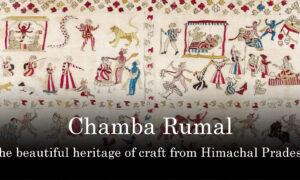

















Pingback: Different Type Of Fashion Designers Part 2